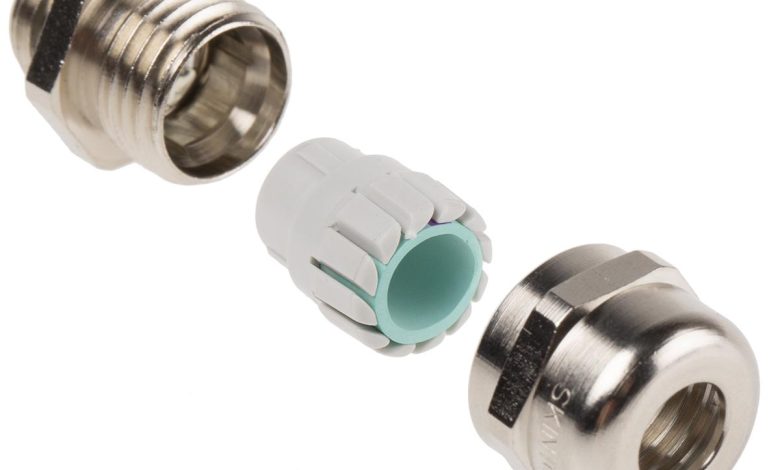Cable Glands Will Be A Thing Of The Past And Here’s Why

When selecting cable glands, you should consider the performance requirements for the application. A variety of factors should considered, including pressure and ambient temperature range, selection of sizes, number of elements assembled, and mounting feature. The next step in evaluating the cable gland’s performance is to identify its main advantages and disadvantages. Listed below are the benefits of cable glands. They also serve as good strain relief and corrosion resistance. These advantages make cable glands a valuable investment.
Sealing out Dust, Dirt, and Liquids
When sealing out dirt, moisture, and dust, cable glands are an essential part of a good cable management strategy. These Cable Glands prevent the ingress of moisture and dust while maintaining the ingress protection rating of the cable enclosure. Cable glands are manufactured based on the environment in which they are to be used, from indoor to outdoor applications, for use in safe industrial zones to hazardous environments.
Providing Strain Relief
If you want to extend the life of your cables, then a great solution is to use strain relief cable lands. Cable glands and strain reliefs are an essential part of cable assembly. This type of cable protection is made to protect wires and cables from external forces, and they come in many sizes and designs to fit any project. Here’s how to select a cable gland or strain relief. Listed below are some of the most popular types:
A common strain relief type is a cable gland or dome. It fits over a cable at the point of connection to prevent the wire from rubbing against sharp edges. Another option is a flex style strain relief, which creates a bend at the connection point. These products help prevent kinking and breakage. Other type is called a cable bushing, which is a hollow plastic lining that provides electrical isolation.
Another Type of Strain Relief
Another type of strain relief is a compression plastic bushing. These types of cable strain reliefs seal the entry to the enclosure and offer excellent strain relief. They also resist corrosion and impact. A strain relief bushing may used in high-pressure environments or hazardous duty locations. To get the best results from your installation, consider using channel locking pliers. The tools you need to remove a cable gland will depend on the size of the cable and where it’s installed.
Strain reliefs come in many styles, including flex style strain reliefs. These types offer flexible bend protection and eliminate the chance of power cord kinking. These also often made with an integral flex relief. The type of strain relief you select should fit the diameter of the cable. A strain relief with a flex relief has a specific outer diameter, which is helpful when selecting a strain relief for a particular size of cord.
Providing Flexible Bend Protection
Providing flexible bend protection with cable lands is a good option when the bending loads are high and the cables are exposed to vibrations or other forms of mechanical damage. Cable glands with a stainless steel EMC shielding spring prevent the jacket from breaking during bending. Their exceptional sealing performance and stainless steel cable guarding spring guarantee a permanent barrier against damage to flexible cables. Stainless steel cable glands are particularly suitable for power supplies, surveillance cameras, meters, and wireless networking ODUs.
EVERFLEX bending strain relief is a good choice for providing flexible bend protection. This cable protection device is a combination of polyurethane and helical steel rods that increase stiffness near the rigid attachment point while limiting bend radius. In addition to this, the cable is protected from damaging impact by the strain relief. The flexible bending protection of this cable land reduces the risk of kinking by limiting the bend radius.
Resisting Corrosion
When it comes to protecting and preventing cable corrosion, 3M Electrical Products has a complete line of solutions. The company’s line of products includes tapes, sealants, and coatings for both medium-voltage and low-voltage cables. Cables that exposed to salt water or galvanized steel wire Armour are particularly susceptible to corrosion. By using a high-quality corrosion-resistance coating, you can avoid these issues and protect your cables.
Salt spray corrosion tests were conducted on coupons with exposed 25.4-mm-square surfaces. Tests performed in flowing, tidal, and quiet seawater. The samples loaded into an upright cabinet with the exposed surface angled between 20 and 25 degrees from the vertical. In one test, eight samples were tested at 500-h intervals, while the others were left until red rust was evident. Corrosion resistance also determined with visual examination.
Various Types
Various types of materials are susceptible to corrosion. Inter-granular corrosion occurs at the grain boundaries of metal, while high-temperature corrosion involves oxidation, suffixation, metal dusting, and molten salt corrosion. The occurrence of microorganisms in corrosion can cause short circuits and wire breakage. Moreover, rusting wire may also break or short circuit.
Cable glands in hazardous environments are prone to corrosion and chemical attack. Most Cable Glands are made of brass, which offers good resistance to mild corrosive environments. However, brass does not offer adequate protection against chemical attack in petrochemical processes. The corrosion of these cables will eventually erode away the gland. And once the gland is no longer functional, the installation of the gland will be compromised. However, there are ways to minimize this corrosion, which include using protective shrouds.
Providing Electromagnetic Shielding
Providing electromagnetic shielding for your cables and wire assemblies is vital in preventing the effects of EMI. As cables act as conductors for noise and signal transmission, they can also pick up radiated electromagnetic interference from other sources. Because of these hazards, shielding is often included in cable and wire assemblies. But to maximize the protection, you must choose the right type of shielding for your application. Without proper shielding, your cables may not work efficiently or protect your electronics effectively.
One type of shielding known as braided shielding, which has a woven mesh structure. Braid shielding can offer 70-95 percent coverage. Other forms of shielding known as foil or tape shielding. This material thinly bonded to a carrier material for strength. It can also wrapped around the wire or cable in an overlapped manner. In addition, conductive materials can used to create spiral shielding. These types of shielding usually used for small-to-medium-sized cables and wires.
Other Types of Shielding
Other types of shielding are available in the form of ferrite beads or sleeve. These materials can block EMI from nearby devices by reducing the amount of signal transmitted. In addition to this, ferrite beads or sleeved cables can also help in redirecting magnetic fields. Plastic is also becoming more popular for aesthetic purposes, but make sure to select a metallized compound. Aluminium foil lining is particularly effective.
Another type of cable protection that is useful in EMC applications is ground straps. These shielding products can mounted on metal plates, DIN rails, or bus bars. SKL shield clamps made of high-quality brass material and can provide good strain relief. They can also pass EN 62444 strain relief requirements. Additionally, icotek offers custom EMC clamp assemblies for shielding up to twelve cables.




